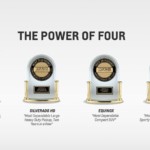Between 1929 and 1939, the United States experienced bleak economic prospects across a multitude of industries. Families once prosperous found themselves pinching pennies so hard that their fingers practically touched.
Yet somehow, Chevrolet was able to consistently snag around a quarter to a third of the car-buying market during this challenging period.
What was the secret to their corporate success that kept their workers employed despite a grim outlook for an entire decade? Though many factors came into play, one was particularly fascinating: their corporate advertising.
Reaching Buyers in the 1930s
Today, it’s relatively easy for even a modest-sized local dealership to tell people they have a particular certified, pre-owned Chevy for sale. All they need to do is upload an image to their website’s inventory list and then blast out a few notifications via social platforms. Although this doesn’t guarantee that their full target audience will hear about the Chevy, they didn’t have to do as much heavy lifting to at least start some buzz.
In the 1930s, life was dramatically different. Consequently, so were the ways that Chevrolet reached out to the people most likely to need their cars and trucks.
Two of the primary mechanisms the Chevy corporation used to capture the attention of individuals and families were printed advertisements and radio spots. At that time, newspapers and magazines were the way information was disseminated. Plus, the radio became so popular that by 1940 there were more than 700 radio stations across the nation making collectively more than 200 million in ad spot sales.
It was a no-brainer for any company that wanted to reach the eyes and ears of Americans to lean on these powerful means of communication. Yet the advertisements in the 1930s were vastly different than any you’re bound to see today on television, YouTube, or your favorite vehicle-related publication.
What Worked to Sell 1930s Audiences
People in the 1930s weren’t distracted by technology. Thus, they had the time and patience to read advertisements that by contemporary standards seem dry and far too long.
Consider this Chevy copy from a 1931 ad:
“With its air of smartness, its charmingly appointed interiors, its ease of handling and its thorough dependability, the new Chevrolet Six is rightfully being regarded as a woman’s first choice of personal transportation.”
That’s actually just the beginning; the content continues for several additional sentences.
True to the nature of the age, this ad has several key qualities that would never cut it with Millennials or even Generation Xers. First, it reads more like an opinion article. No bullet points, just one big, long paragraph filled to the brim with editorial comments. Forget about skimming an ad like this one; your eye can’t hold onto anything for long because it’s so cramped together.
The second key attribute of the 1930 ad is its word choices. Instead of the ruggedness, the toughness, and the fuel economy so prevalent in advertisements for new and certified pre-owned Chevy products, it talks about far different value propositions.
Not only is this a wonderfully insightful look into how Chevy has changed its ads over the years, but it tells quite a bit about the way that people wanted to be sold to in the 1930s! Obviously, formality reigned above all else. No snazzy, gimmicky verbiage. Just pure grammatically correct prose aimed at middle to upper class educated females in need of a “personal car.” (That wording in itself is a wonderful peek into how the world was beginning to see the relationship between independent women and their cars!)
Moving on, we can evaluate another ad from the Depression. This one is from 1933. Notice the movement into talking about saving money instead of relaxing or enjoying a leisurely spin:
“When Chevrolet owners start talking gasoline mileage, you can’t be blamed for not believing half the things they say. It just doesn’t seem possible for a six as big and powerful as the new Chevrolet — and as speedy — and as solidly, heavily built — to get, as owners claim, ’20 miles to the gallon — ’22’ — ‘sometimes higher’…”
First, consider that by 1933 the Depression was well into its third year. People’s savings were maxed out, and everyone was wondering when the economy would find a balancing point. Chevrolet’s advertising team knew this was the case, so they changed their tactics quite a bit from the 1931 copy above.
Not only are they targeting frugal consumers, but they’re using a tactic that still works to this day: fear of missing out, or FOMO in advertising and marketing circles.
FOMO piggybacks on all our worries that we’re somehow not “in the know” about something we should be. In the case of the Chevy ad, consumers are challenged to weigh their own vehicles’ gas mileage against the perceived “guarantee” of 20 or 22 miles per gallon.
Of course, to a modern car buyer looking for a sedan, the mileage amount would seem pitiful. However, to someone in the 1930s, it might entice them to do more than just take a test drive. In fact, it might encourage them to trade in their old vehicle for a new one with better efficiency.
By 1937, people had somewhat accepted the “new normal” for their lives. Still in a Depression, but moving along with their relationships and lifestyles, they found joy in Sunday drives, family jaunts, and, for the dating set, late-night trips to Lover’s Lane.
Chevrolet capitalized on this romanticized notion of the car as the vehicle to sweet moments with a 1937 ad bustling with tenderness and nostalgia. Some of its copy reads:
“On short or long trips — in June or January — wherever and whenever you wish to go, you will find a Chevrolet the perfect traveling companion! Lively… instantly responsive to your every mood and desire… comfortable… and forever trustworthy.”
The ad is accompanied by a hand-drawn (or painted) image of a young couple on a dark night parked under a lovely tree in their Chevrolet. To be sure, the content of this ad is nothing short of sexy and sultry in its undertones. Guys reading it will assume that to get a girl to like them enough to go for a drive, they’ll need a Chevy. Girls will feel like the man of their dreams can only own one make of vehicle: a Chevrolet.
Of course, Chevy hasn’t jettisoned this method of using sexuality to sell vehicles. But it’s fair to say that the imagery wouldn’t appeal to the modern audience. However, to almost one million people living in the late 1930s, this and related ads (and a hefty reputation) got them to open their wallets and buy a Chevrolet instead of another type of vehicle.
A Trip Down Memory Lane — in a Chevy
Really, evaluating the old-school advertising of any car maker, Chevrolet included, gives us a way to better understand not just the manufacturer, but the times in which it sold its vehicles. Perhaps we should begin looking at the newest Chevy advertisements and asking ourselves what future generations will learn when they watch commercials or read sponsored tweets.


